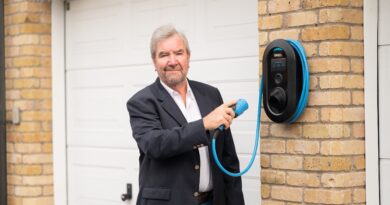Fuel vs B-EV Energy – should there be the divide?
A future of sustainability means doing things differently, especially within the EV space.
Vidal Bharath, Chief Operating Officer at Bramble Energy shares his concerns with EV Powered to meet the government deadlines.
The world has finally woken to the fact that a completely clean solution to decarbonise the industry is needed, which is great. But it has led to a ‘one-size-fits-all’ mentality which in the current circumstances and the timing of the net zero 2050 target is a dangerous and difficult path to go down. The reality of the climate crisis is a lot more complicated, and we are now a lot closer to the clock striking midnight.
As we already know, in July 2021, the UK government released its plan Decarbonising transport: a better, greener Britain; its pathway to net zero transport. The main points being the phasing out of diesel and petrol vehicles, government fleets transitioning to zero emission and the infrastructure requirements for BEV (battery electric vehicles) charging.
In response the government has pledged to phase out the sale of all new petrol and diesel cars by 2030, just eight years away, and all new cars and vans to be fully zero emissions at the tailpipe from 2035. How can we make this a reality?
If the ‘versus’ mentality stays no one wins
There is no denying the benefits BEV offers and of course there are certain cases where these are the best bet. They excel at short distances and if you are lucky enough to be positioned near adequate charging infrastructure, you will not need to look much further for a zero-emission solution.
However, to focus purely on the battery as our transport saviour is not the way to go. For longer distances and whenever we are thinking of transporting any significant weight, fuel cells offer the most optimised clean solution. Where the difficulty lies, is moving away from the line which has been drawn in the sand between these two technologies to be able to truly achieve net zero.
The commentary has sadly become a ‘versus’ situation. It appears you can either be in the battery camp or the fuel cell camp and large names in the industry perpetuate this outlook which truly is a waste of the time we have left to decarbonise. The real truth is these two technologies completely complement one another to offer the most optimised solution for green transport.
Fuel Cell Electric Vehicles (FCEVs) for larger transportation applications and haulage of goods as well as people is where we arrive, and we are already seeing a number of successful deployments of large-scale hydrogen fuel cell vehicle fleets. Green Tomato Cars operate a 27 Toyota Mirai Fleet in London that surpassed one million miles in 2019 and each of these cars has saved the equivalent of 7.6 tonnes of CO2 over this distance and emitted zero NOx emissions.
If there is no investment in infrastructure, there is no solution
The sticking point for both technologies to be deployed at speed and scale is infrastructure. The reality of everyone transitioning to a battery electric vehicle is an unrealistic outlook with our existing grid, and frankly other grids around the world- not developed enough to handle this excess in demand.
The government’s decarbonisation plan puts far too much focus on this development of charging infrastructure and far too little on the development of hydrogen refuelling stations.
A hydrogen fuel cell vehicle refuels in the same timeframe as its diesel counterpart. This means that in the UK, we can service our demand using the number of refuelling stations we currently have. Moreover, the deployment of hydrogen refuellers can be made in a timelier manner and is self-contained. This means a complete end-to-end refuelling solution using renewables to generate hydrogen; with no additional strain on the grid able to comfortably deploy hydrogen for refuelling any vehicle.
Policy positions everything
As we continue with the decarbonisation challenge, a blended approach is the only way forward and this must start from the top down with policy and strategy allowing for deployment to take place quickly.
The targets for phasing out polluting vehicles by government are only the starting point for the transport sector. There needs to be a clear plan of where each green solution is best placed so that they are rolled out with the aid of the correct funding, subsidies and the investment of more research and development to harness their full potential.






